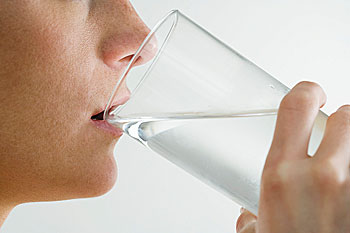By the staff of Soquel Creek Water District

Those are the three qualities that rated highest for a supplemental water supply in several community surveys that the District conducted earlier this year. While the first two qualities are self-explanatory, the third is a bit more complex. We look for reliability in many things in our daily lives, from the cars and bicycles that take us from one place to another to the friends who accompany us through our lives, and they all have one thing in common: they are there for us when we need them.
But when it comes to water, reliability is often overlooked because, for the most part, water service in the United States is never unreliable. 24 hours a day and 7 days a week the water that we use to drink, cook, wash, and bathe with is, barring emergencies, accidents, or natural disasters, always accessible. As a result, we end up taking the availability of life’s most precious resource for granted. The current drought, however, has shaken up that perception for many California residents. As images of nearly empty reservoirs fill the news, statewide water transfer projects cease deliveries to municipalities and farms, and mandatory curtailment measures are enacted statewide for the first time in history, people are wondering, “Just how reliable is my water source?”
Historically, this water source has been perfectly reliable, providing for all of the water needs of the diverse users of the basin. However, since 1980, pumpers in the mid-county region have been collectively overdrafting the basin, meaning that more water is removed from it than is naturally replenished by rainfall.
This overdraft condition has caused the groundwater to fall to dangerously low levels and has allowed seawater to begin moving into the aquifers. This process, referred to as seawater intrusion, is extremely damaging, because once it reaches drinking water wells, they become unusable.
If this occurs, the reliability of our water supply vanishes. To avoid this, we need to find a supplemental water supply so that we can stop or significantly reduce pumping from the groundwater basin and let it return to a sustainable level.
In planning for the future, the term RESILIENCY is commonly used when talking about the ability of communities to adapt to social, environmental, and economic pressures.
Reliability and resiliency go hand in hand when dealing with water resource management because the reliability of a water source affects everything from the amount people pay on their water bill to beach showers to businesses, shaping the way a community lives, works, and plays.
A resilient community is one that can recover or rebound from the negative impacts of natural disasters, recessions, etc., but also one that makes wise decisions to avoid or be less vulnerable to detrimental situations in the first place.
Obtaining a supplemental water supply that is either insulated or isolated from the effects of drought, seawater intrusion, and climate change makes a community much more resilient because it ensures the reliability of water over time. We appreciate the fact that our community values and supports the inclusion of this criterion in our decision making process regarding a supplemental water supply and will make sure that whatever option or options we end up pursuing provides the reliability we need to be a resilient, livable, and sustainable community.